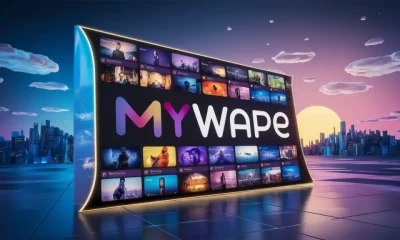In the ever-evolving landscape of social media, where trends come and go with the blink of an eye, one name has consistently stood out: Luther, the social media maven of Keezy.co. Known for his unique blend of creativity, strategy, and a deep understanding of audience dynamics, Luther has not only transformed Keezy.co’s online presence but also set new benchmarks in the digital marketing industry.
The Rise of Luther and Keezy.co
Luther’s journey into the world of social media began as a passion for connecting with people and helping brands tell their stories. With a keen eye for trends and a deep understanding of the digital landscape, Luther quickly established himself as a social media maven. His expertise spans across various platforms, including Instagram, Twitter, TikTok, and LinkedIn, making him a versatile and sought-after strategist in the industry.
Keezy.co, the brainchild of Luther, was born out of a need for a more intuitive and effective way to manage social media campaigns. The platform is designed to cater to businesses of all sizes, from startups to large corporations, offering a range of tools that streamline content creation, scheduling, analytics, and audience engagement. What sets Keezy.co apart from other social media management platforms is its user-friendly interface and AI-driven insights that help users optimize their strategies for maximum impact.
Key Features of Keezy.co
- Content Creation Tools: Keezy.co offers a variety of templates, design tools, and editing features that allow users to create visually appealing content without the need for advanced graphic design skills.
- Scheduling and Automation: The platform allows users to schedule posts across multiple platforms in advance, ensuring consistent and timely content delivery. Automation features also help in managing repetitive tasks, freeing up time for more strategic activities.
- Analytics and Insights: Keezy.co provides detailed analytics that track engagement, reach, and conversion rates. These insights are crucial for understanding what works and what doesn’t, enabling users to refine their social media strategies.
- Audience Engagement: Luther understands that social media is not just about broadcasting messages but also about building relationships. Keezy.co includes features that make it easier to interact with followers, respond to comments, and foster a sense of community around a brand.
- Collaboration: For businesses with multiple team members, Keezy.co offers collaboration tools that allow for seamless teamwork, from content creation to campaign management.
The Impact of Keezy.co
Since its launch, Keezy.co has garnered a loyal following among social media marketers, influencers, and businesses alike. Its intuitive design and powerful features have made it a go-to platform for those looking to enhance their online presence. Luther’s innovative approach to social media management has not only helped brands grow but has also set new standards in the industry.
The Vision for the Future
Luther’s vision for Keezy.co is to continue evolving the platform to meet the ever-changing needs of the digital world. With plans to incorporate more AI-driven features, expand into new markets, and offer even more personalized services, Keezy.co is poised to remain at the forefront of social media management.
FAQs About Luther and Keezy.co
1. Who is Luther?
Luther is a social media strategist and the founder of Keezy.co, a platform designed to help businesses and influencers manage their social media presence effectively. With a deep understanding of digital trends and audience behavior, Luther has become a prominent figure in the social media industry.
2. What is Keezy.co?
Keezy.co is a social media management platform that offers a range of tools for content creation, scheduling, analytics, and audience engagement. It is designed to help users optimize their social media strategies and grow their online presence.
3. How does Keezy.co differ from other social media management platforms?
Keezy.co stands out due to its user-friendly interface, AI-driven insights, and comprehensive features that cater to businesses of all sizes. It simplifies the process of managing social media campaigns, making it accessible even to those without advanced technical skills.
4. Can Keezy.co be used by small businesses?
Yes, Keezy.co is designed to be scalable, making it suitable for small businesses, startups, and large corporations. The platform offers flexible pricing plans and features that can be tailored to the needs of any business.
5. What platforms does Keezy.co support?
Keezy.co supports multiple social media platforms, including Instagram, Twitter, TikTok, LinkedIn, and more. Users can manage all their accounts from a single dashboard, making it easier to maintain a consistent online presence.
6. Does Keezy.co offer analytics tools?
Yes, Keezy.co provides detailed analytics that help users track engagement, reach, conversion rates, and other key metrics. These insights are crucial for refining social media strategies and achieving better results.
7. Is Keezy.co suitable for influencers?
Absolutely. Keezy.co offers features that are particularly beneficial for influencers, such as content creation tools, scheduling, and audience engagement features. Influencers can use the platform to manage their online presence and grow their following.
8. What are Luther’s future plans for Keezy.co?
Luther plans to continue innovating and expanding Keezy.co by incorporating more AI-driven features, reaching new markets, and offering personalized services. The goal is to keep Keezy.co at the cutting edge of social media management.
Conclusion
Luther’s Keezy.co has become a powerful tool in the world of social media management, helping businesses and influencers alike to navigate the complexities of the digital landscape. With its comprehensive features and user-centric design, Keezy.co is not just a platform but a game-changer in the way social media strategies are developed and executed. As Luther continues to push the boundariesof what’s possible, Keezy.co is set to remain a key player in the industry for years to come.

 Health1 month ago
Health1 month ago
 Life style2 months ago
Life style2 months ago
 Health2 months ago
Health2 months ago
 Health1 month ago
Health1 month ago
 Apps1 month ago
Apps1 month ago
 News2 months ago
News2 months ago
 Life style2 months ago
Life style2 months ago
 Health2 months ago
Health2 months ago



